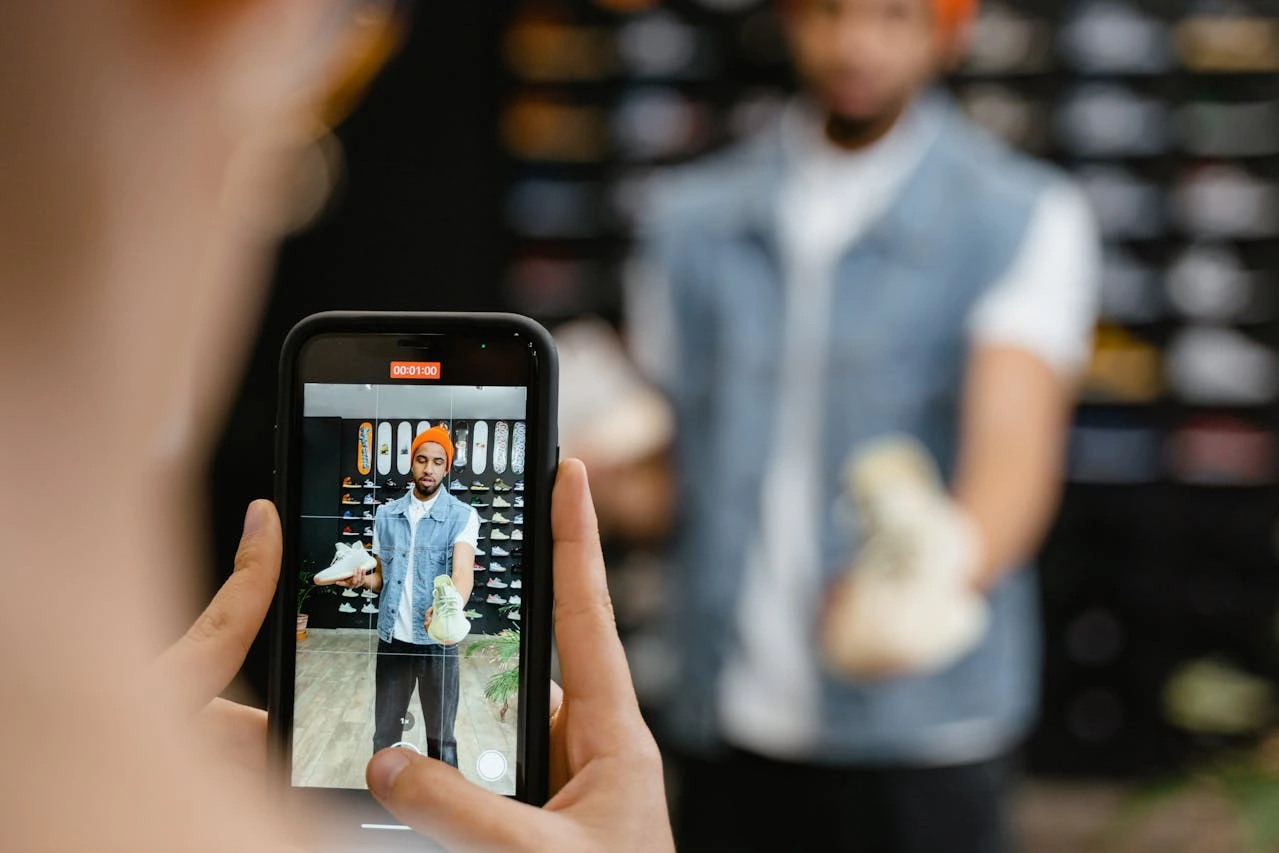Many people think: “Advertising sucks.” That's often true. Loud, colorful, discount spam.
But finding new customers is also possible softly: by you Answer questionsThat people really have.
You'll find 10 steps below. For each step, I explain:
- What it means
- How do you do it
- What do you do with it afterwards
- Examples to copy
1) The “customer dictionary” (15 minutes)
What it means:
You collect the real language of your customers. Don't write beautifully. The way you type it quickly into your mobile phone.
How do you do it:
- Pick up paper or a blank file. Set a 15-minute timer
- Write 20 real search phrases On. Briefly. Small Without a Comma
- Situation: “open today”, “no appointment”, “nearby”
- Produkt: “T shirt black M”, “tire change”, “cut short”
- Worry: “price”, “duration”, “warranty”, “return”
- Urgent: “now”, “until tomorrow”, “quickly”
Exemples:
- Hairdresser: “Haircut Open Today [City],” “Cut Price Ladies,” “Without Appointment”
- Workshop: “Tire Change Price,” “Inspection Duration,” “Emergency Service”
- Café: “Coffee to go fast”, “open today [city]”
- Online Shop: “Hoodie Black XL Warehouse”, “Delivery Tomorrow”, “Free Returns”
What you do with it afterwards:
- Page title build from this (e.g. “Tire Change Price — Date Available Today”).
- Section headings build from it (“Price & Duration”, “Date today? ”, “In stock? “).
- Knobs in customer language (“Make an appointment today”, “Check warehouse”, “Call now”).
- Quick questions & answers build from it (“How long does... take? ”, “What does... cost? “).
2) Plain language above: price, time, procedure, contact (10 minutes per page)
What it means:
At the top of every page are the 4 things that everyone wants to know. Not novels.
How do you do it:
- prize: “from 39€” (in the shop: product price + shipping visible).
- time: “15—30 min,” “Ordered today — there tomorrow.”
- Process in 3 steps: “1st quick call • 2nd appointment today/tomorrow • 3rd done.”
- Knob: “Call now,” “Make an appointment today,” “Add to basket.”
- Little proof Right next to it: ⭐ 4.8/5 • ⏱️ Recall 30 mins • 📦 In stock.
Example header (to copy):
Tire Change Price — Appointment Available Today
from 59€ • 30—45 min • 1) make a quick call 2) today appointment 3) done
⭐ 4.9/5 • Call back in 30 mins
[Save an appointment today]
What you do with it afterwards:
You build this plain text header On every important page. This is how you understand in 5 seconds: What does it cost? How long does it take? What am I doing now?
3) One Page per search request (not per department)
What it means:
People search for One Objective: Know the price, date today, specific size, fast delivery. In return, gets Every wish has its own page.
How do you do it:
- Select 3-5 common requests from the dictionary.
- Create a separate page for each request with this structure:
- Page title = search set (made legible)
- plain text header (step 2)
- 3 short pointsThat help immediately
- Real photo
- proofs (reviews, mini case)
- Quick questions & answers (3-5)
- Big button (call, appointment, purchase)
Page ideas:
- “Haircut open today | Price & Duration”
- “Tire Change Price | Appointment Today”
- “Black M T-shirt | delivered tomorrow”
- “Tax return help | plain language & AB price”
What you do with it afterwards:
You link to these pages visibly from the homepage, navigation and from short posts (“This week: free appointments”).
4) Evidence first: Show that it's real
What it means:
Before someone compares prices, they want to know: Can I trust them?
How do you do it:
- Valuations: real stars + 1-2 short quotes.
- Real photo: you/team/store/product, not perfect but true.
- Mini-Fall: “10:15 in — 11:05 done.” /“Ordered today — there tomorrow.”
- Service notes (Shop): “Shipped today,” “Free returns.”
Example block:
⭐ 4.8/5 “Quick, fair, friendly.”
🧾 Today: 30 minute tire change, 59€ — 16:00 on the road again.
[Save an appointment today]
What you do with it afterwards:
You Place This Block of Evidence directly under the plain text header On every page.
5) Weekly 10-minute check (without social stress)
What it means:
Small routine, big impact. You stay visible without much time.
How do you do it (every week, timer on):
- 1 photo Post (today's offer/product/team, real).
- 1 set Post: “Quick appointment this week/ delivered tomorrow.”
- 1 Check performance: Name clear? AB price visible?
- Get 1 review: Ask regular customer briefly.
12 ideas for rotating:
“Appointment available today (2-4 p.m.) — Give us a quick call.”
“New: Hoodie black XL — in stock, shipping today.”
“Short cut — 30-45 minutes, from 39€.”
“Tire change — appointment today, 59€.”
... (just repeat)
What you do with it afterwards:
The posts always link to The Right Page (from step 3). In this way, every small impulse leads to a clear answer page.
6) Recognition: Sign, sentence, ritual
What it means:
Small, consistent things stay in your mind.
How do you do it:
- token: e.g. pink cups, yellow tools, special packaging
- Short sentence: “Appointment available today.”, “Ready in 2 coffees.”, “There tomorrow.”
- ritual: “Monday Mini Extra,” “Friday Wheel of Fortune,” “Thank you card in package.”
What you do with it afterwards:
Sign, sentence and ritual The same everywhere Show: at the door, on the website, in emails, in the package, in the profile picture. It makes you look familiar.
7) Write how to search — Not how you advertise
What it means:
Your words sound like your customer's search, not an advertising brochure.
How do you do it:
- Page title In customer language:
- “Haircut Open Today [City] — Price & Duration”
- “Tire Change Price — Appointment Available Today”
- “T shirt black M — delivered tomorrow”
- Short paragraphs, clear subheadings: prize, Perpetuity, Expiry, proofs, Questions & answers, Call/buy.
- Knobs with clear action: “Call Now,” “Make an Appointment Today,” “Add to Shopping Cart.”
- Image captions (short, honest): “black t-shirt M — in stock.”
Before/after (workshop example):
- Before: “Our premium service offers tailor-made solutions.”
- After: “Tire changes possible today. 30-45 minutes from 59€. Give us a quick call — appointment today.”
What you do with it afterwards:
Check every text: Does that sound like a real search? If not: abbreviate, simplify, plain language.
8) Request chain without gaps (This is where you lose the most)
What it means:
Many Jump upon The click off: no call button, too long form, no one answers.
How do you do it:
- Large call button Clearly visible on every page.
- Short form: only 3 fields (name, contact, request).
- Instant response After sending: “Thank you! We'll get back to you today.”
- SMS template (copy-paste):
“Hi [name], thanks for your request. Is a recall appropriate today between 4 and 6 PM? — [Your name]”
- Notes next to the phone: Who will call back when?
- If a call is missed: Call back or send an SMS within 30 minutes.
What you do with it afterwards:
Check once a week: Do the button, form, recall work? If so → stay tuned. If no → repair immediately.
9) On site & in a package: visible, not embarrassing
What it means:
You can also draw friendly attention to yourself offline.
How do you do it:
- Door sign: “Quick date today/ open today.”
- Little goodie With a short sentence. Small logo.
- online store: Thank you card + “Tomorrow there” sticker
- Please rate On a small card:
“Was everything good? One sentence helps us a lot: [review link] — Thank you! ”
What you do with it afterwards:
Briefly quote good feedback (with permission) and upstairs Point to the appropriate page (step 4).
10) Your 7-day plan (30-45 minutes per day)
What it means:
Small steps, every day. After a week, your basic framework is in place.
Plan:
- Day 1: Customer dictionary (20 searches).
- Day 2: Include a plain text header at the top of 3 important pages.
- Day 3: Collect evidence + make it visible (reviews, photo, mini-case).
- Day 4: Start a 10-minute check (photo + set + test + evaluation).
- Day 5: Build your first desired page (“open today/price/duration”).
- Day 6: Define a sign, a short sentence, a small ritual and show.
- Day 7: Test the request chain (button, form, answer, SMS).
What happens after that:
- From week 2, every Thursday The 10-minute check.
- Per week Another desired page.
- Once a month Prices, times, photos update.
Everything at a glance — mini checklist
- 20 search sets collected
- Per important page: price, time, process, big button upstairs
- Evidence visible: stars, real photo, mini case
- At least eine Page per search request
- Big call button everywhere, short form, instant answer active
- SMS template at your fingertips
- 10 minutes of visibility per week
- Sign + short sentence + ritual the same everywhere
In short
You don't have “too little advertising.” You're missing Clear Answers in the right place.
When you Customer language collect, Plain text above delivers proofs Show and hurdles Remove, you'll be discoverable — without noise.
That's how lumps end. That's how new customers come in.


